Landslides are classified by their type of movement. The four main types of movement are:
Landslides can be classified as just one of these movements or, more commonly, can be a mixture of several. Geologists also refer to the type of material involved in the movement, e.g. rock, debris, earth.
Falls
Falls are landslides that involve the collapse of material from a cliff or steep slope. Falls usually involve a mixture of free fall through the air, bouncing or rolling. A fall-type landslide results in the collection of rock or debris near the base of a slope.
A good example of a fall landslide is the rock fall at Pennington Point.
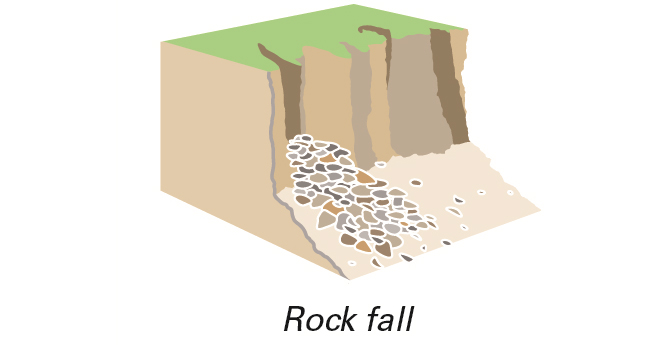
Falls: the rock mass descends mostly through air by free fall, bouncing or rolling, after being separated from the rest of the slope. BGS ©UKRI.
Topples
Topple failures involve the forward rotation and movement of a mass of rock, earth or debris out of a slope. This kind of slope failure generally occurs around an axis (or point) at or near the base of the block of rock.
A good example of a site experiencing topple failures is Aldbrough, UK.
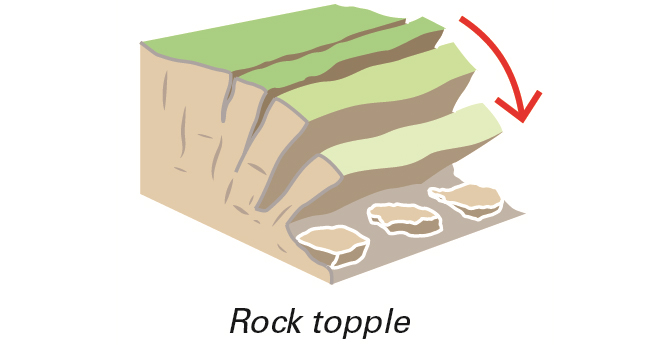
Topples: movements of rock, debris or earth masses by forward rotation about a pivot point. BGS ©UKRI.
Talus cones
A topple often results in the formation of debris or a debris cone at the base of the slope; this pile is called a talus cone. New talus cones don’t have any plants growing on them. Old talus cone can have weeds and even trees on them.
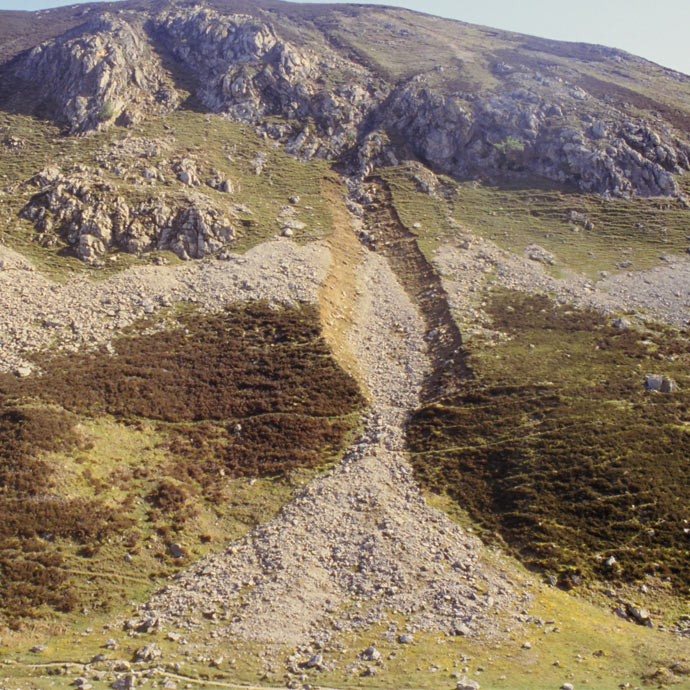
Limestone talus cone in the Allt nan Uamh, Assynt. BGS ©UKRI.
Slides
A slide-type landslide is a downslope movement of material that occurs along a distinctive rupture or slip surface. The slip surface tends to be deeper than that of other landslide types and not structurally controlled. These landslides are characterised by a prominent main scarp and back-tilted bench or block at the top, with limited internal deformation. Below this, movement is more or less rotational about an axis.
Slides are characterised by a failure of material at depth and then movement by sliding along a rupture or slip surface. There are two types of slide failure, rotational slides (slumps) and translational (planar) slides.
Rotational slides
If the slip surface is listric (curved or spoon-shaped) the slide is said to be rotational. A good example of a rotational landslide is the Holbeck Hall landslide, in Scarborough, North Yorkshire.
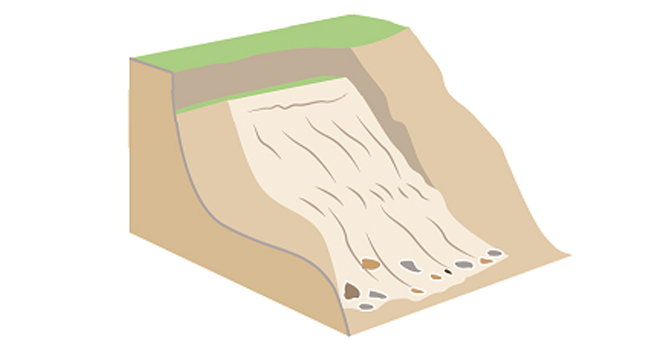
Rotational slides occur on curved slip surfaces where the upper surface of the displaced material may tilt backwards toward the scarp. BGS © UKRI.
Translational slides
A translational or planar landslide is a downslope movement of material that occurs along a distinctive planar surface of weakness such as a fault, joint or bedding plane. Some of the largest and most damaging landslides on Earth are translational. These landslides occur at all scales and are not self-stabilising. They can be very rapid where discontinuities are steep.
Translational landslides commonly trigger debris flows in Scotland, such as the Stob Coire Sgriodain landslide.
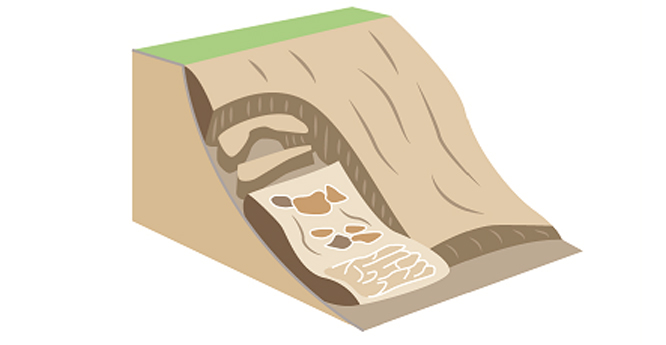
Translational slides occur along a distinctive planar surface of weakness such as a fault, joint or bedding plane. BGS ©UKRI.
Flows
Flows are landslides that involve the movement of material down a slope in the form of a fluid. Flows often leave behind a distinctive, upside-down funnel shaped deposit where the landslide material has stopped moving. There are different types of flows: mud, debris and rock (rock avalanches).
Two of the most common in the UK are mud flows and debris flows. Mud flows can be found on the south coast of England, often associated with larger complex landslides such as Stonebarrow Hill in Dorset. Debris flows can be very rapid and usually occur on steep slopes such as those at the Rest And Be Thankful Pass in Argyll and Bute.
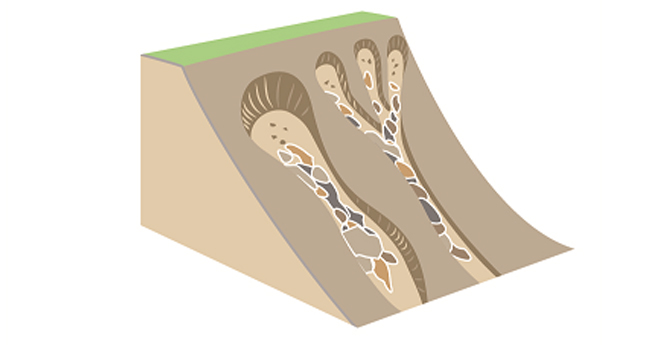
Flows are landslides that involve the movement of material down a slope in the form of a fluid. BGS ©UKRI.
How does BGS classify a landslide?
BGS follows the scheme based on Varnes (1978) , Cruden and Varnes (1996) and Hungr et al. (2014). The scheme terminology is also that suggested by the Unesco Working Party on the ‘World Landslide Inventory’ (WP WLI 1990, WP/WLI 1993).
You may also be interested in

Discovering Geology
Discovering Geology introduces a range of geoscience topics to school-age students and learners of all ages.
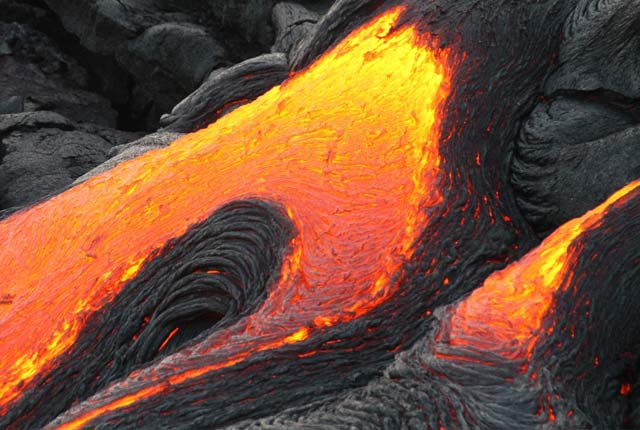
Earth hazards
The Earth beneath our feet is constantly shifting and moving, and violently with catastrophic and immediate results. Find out more about earth hazards.
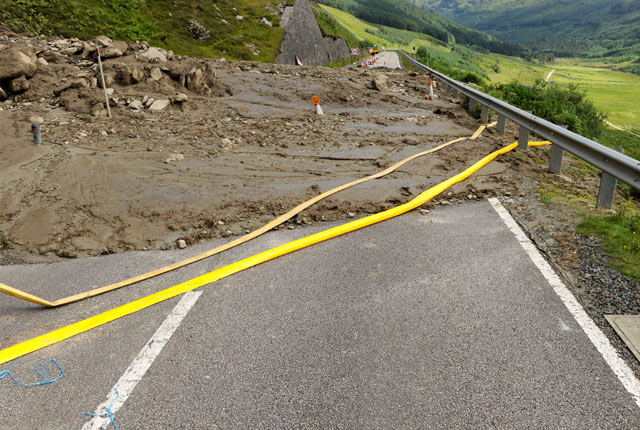
Understanding landslides
What is a landslide? Why do landslides happen? How to classify a landslide. Landslides in the UK and around the world.
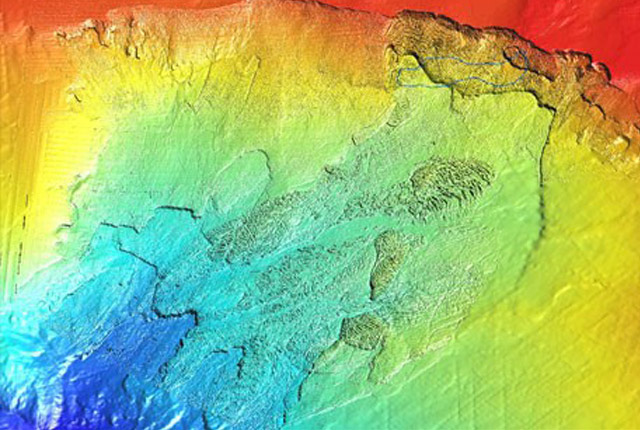
Landslides in the UK and around the world
Landslides in the UK, around the world and under the sea.



